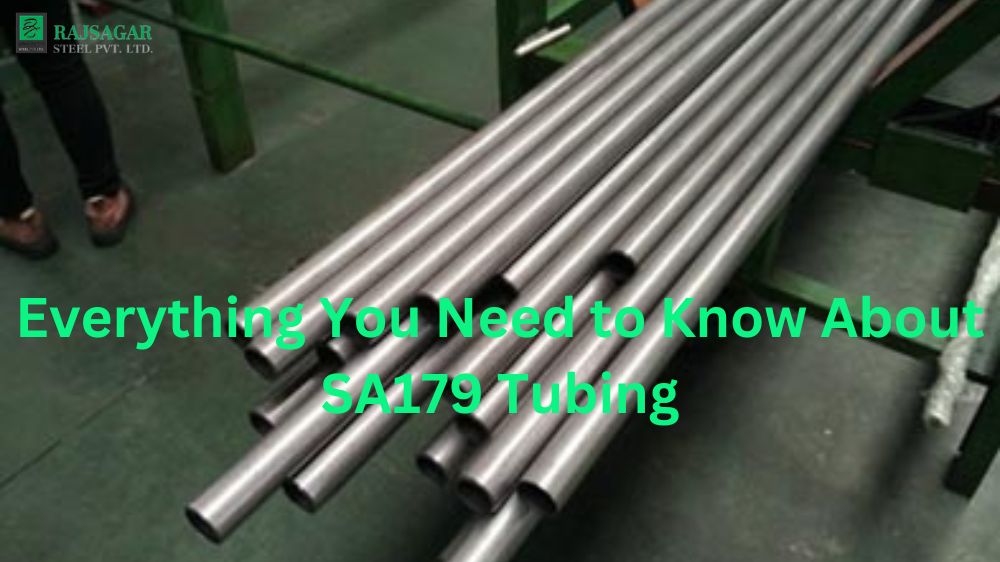In the manufacturing world, it is often necessary to transport fluids and gases between various system components. One of the most common methods of doing so is through tubing. However, not all tubing is created equal, with each variety possessing its own unique features and functions. Today, we’ll be taking a closer look at SA179 tubing, discussing everything you need to know to determine whether or not this type of tubing is right for your application.
What is SA179 Tubing?
SA179 tubing is a cold-drawn, low-carbon steel tubing used in heat exchangers, condensers, and other similar applications. It is made from ASTM A179 specifications that cover minimum wall thickness, seamless cold-drawn low-carbon steel tubes for tubular heat exchangers, condensers, and similar heat transfer apparatus.
SA179 tubing is a carbon steel tube used for heat exchange and condenser applications, often found in power plants and other industries. It typically has an outside diameter ranging from ¼” to 5”, with wall thicknesses from .035” to .500” thick. The biggest advantage of SA179 tubing is its ability to maintain relatively high strength despite fluctuations in temperature, thanks to its chemical composition. Additionally, it provides excellent corrosion resistance due to its low sulfur and phosphorous levels. As a result, this type of tubing has become increasingly popular for many heating elements, including air conditioning systems and boilers. Furthermore, owing to its good formability characteristics compared with other types of steel tubes make it ideal for various fabrication tasks such as bending or welding. With all these advantages combined, SA179 tubing is the perfect choice for many industrial applications requiring reliable heat transfer capabilities while remaining cost-effective simultaneously!
Characteristics of SA179 Tubing
SA179 tubing features several important characteristics that suit it for various applications. First and foremost, it is highly resistant to corrosion, ensuring it maintains its structural integrity over time. Additionally, it is relatively lightweight and easy to fabricate, allowing for quick and efficient installation in various settings. Furthermore, it is highly durable, able to withstand extreme temperatures and pressures without compromising its functionality.
How is SA179 Tubing Fabricated?
There are several different methods for fabricating SA179 tubing. One of the most popular is cold drawing, which involves pulling the tubing through a series of dies that gradually reduce its diameter while simultaneously improving its mechanical properties. This process ensures that the tubing is strong, straight, and uniform in size throughout its length. Alternatively, hot extrusion can be used to create SA179 tubing in a single step, although this can increase the risk of defects and imperfections.
Where is SA179 Tubing Used?
SA179 tubing is commonly used in various types of heat exchangers, including finned tube heat exchangers, shell-and-tube heat exchangers, and plate heat exchangers. It is also frequently used in boilers, condensers, and other similar apparatuses that require heat transfer. Due to its high resistance to corrosion and durability, it is well suited to harsh environments, such as those found in chemical and petrochemical plants.
Benefits of Using SA179 Tubing
Increased Efficiency
The use of SA179 tubing can increase the efficiency of your heating and cooling system by up to 30%. This is because the tubing is designed to transfer heat more effectively than other types of tubing. As a result, your system will have to work less hard to maintain the desired temperature, saving you money on your energy bills.
Longer Lifespan
SA179 tubing also has a longer lifespan than other types of tubing. This is because the material is more resistant to corrosion and wear. As a result, you will have to replace your tubing less often, which can save you money in the long run.
Reduced Maintenance
Using SA179 tubing can also reduce the maintenance that your heating and cooling system requires. The tubing is less likely to develop leaks or other problems. As a result, you will not have to spend as much time or money on repairs.
Improved Safety
The use of SA179 tubing can also improve the safety of your heating and cooling system. This is because the tubing is less likely to burst or leak, which could cause serious damage or injury.
Enhanced Durability
SA179 tubing is also more durable than other types of tubing. This means that it can withstand higher temperatures and pressures without breaking down. As a result, your system will be able to operate more effectively for a longer period.
Conclusion:
Ultimately, whether or not SA179 tubing is the right choice for your manufacturing application will depend upon a range of factors, including operating conditions, required properties, and industry requirements. However, by understanding the unique characteristics and benefits of this type of tubing, you can decide whether or not to use it in your next project. Ultimately, SA179 tubing can help you achieve greater efficiency, performance, and cost-effectiveness in your manufacturing processes, making it a worthwhile option to consider.

